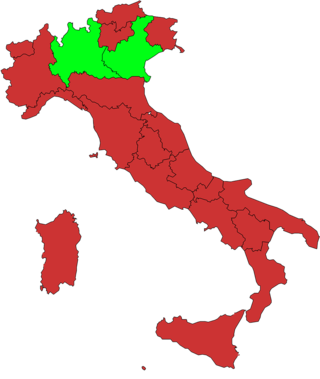
The Constitution of the State of Vermont is the fundamental body of law of the U.S. state of Vermont, describing and framing its government. It was adopted in 1793 following Vermont's admission to the Union in 1791 and is largely based upon the 1777 Constitution of the Vermont Republic which was drafted at Windsor in the Old Constitution House and amended in 1786. At 8,295 words, it is the shortest U.S. state constitution. Largely unchanged since 1777, Vermont's Constitution is the only active constitutional document to have been drafted and ratified outside of the United States.
The Constitution of the Commonwealth of Massachusetts is the fundamental governing document of the Commonwealth of Massachusetts, one of the 50 individual states that make up the United States of America. It consists of a preamble, declaration of rights, description of the principles and framework of government, and articles of amendment. It is the highest legal authority in the state, subordinate only to the U.S. Constitution.
A constitutional amendment is a modification of the constitution of a polity, organization or other type of entity. Amendments are often interwoven into the relevant sections of an existing constitution, directly altering the text. Conversely, they can be appended to the constitution as supplemental additions, thus changing the frame of government without altering the existing text of the document.

The Spanish Constitution is the supreme law of the Kingdom of Spain. It was enacted after its approval in a constitutional referendum; it represents the culmination of the Spanish transition to democracy. It is a written constitution.

The current Constitution of France was adopted on 4 October 1958. It is typically called the Constitution of the Fifth Republic(French: la Constitution de la Cinquième République), and it replaced the Constitution of the Fourth Republic of 1946 with the exception of the preamble per a 1971 decision of the Constitutional Council. The current Constitution regards the separation of church and state, democracy, social welfare, and indivisibility as core principles of the French state.
The current Constitution of the State of Maryland, which was ratified by the people of the state on September 18, 1867, forms the basic law for the U.S. state of Maryland. It replaced the short-lived Maryland Constitution of 1864 and is the fourth constitution under which the state has been governed. It was last amended in 2022.

The Constitution of the State of Tennessee defines the form, structure, activities, character, and fundamental rules of the U.S. State of Tennessee.

The Constitution of the Italian Republic was ratified on 22 December 1947 by the Constituent Assembly, with 453 votes in favour and 62 against, before coming into force on 1 January 1948, one century after the previous Constitution of the Kingdom of Italy had been enacted. The text, which has since been amended sixteen times, was promulgated in an extraordinary edition of Gazzetta Ufficiale on 27 December 1947.

The Constitution of the State of Texas is the document that establishes the structure and function of the government of the U.S. state of Texas, and enumerates the basic rights of the citizens of Texas.

The Constitution of the Commonwealth of Virginia is the document that defines and limits the powers of the state government and the basic rights of the citizens of the Commonwealth of Virginia. Like all other state constitutions, it is supreme over Virginia's laws and acts of government, though it may be superseded by the United States Constitution and U.S. federal law as per the Supremacy Clause.

The Constitution of the State of Minnesota was initially approved by the residents of Minnesota Territory in a special election held on October 13, 1857, and was ratified by the United States Senate on May 11, 1858, marking the admittance of Minnesota to the Union. Nearly 120 amendments have been approved, with perhaps the most significant being a reorganization in 1974 to simplify the document, making it easier for modern readers to comprehend and reducing the extensive verbiage. It is believed that the constitution was amended twice prior to ratification.
The Constitution of the Republic of Iraq is the fundamental law of Iraq. The first constitution came into force in 1925. The current constitution was adopted on September 18, 2005 by the Transitional National Assembly of Iraq, and confirmed by constitutional referendum, held on October 15, 2005. It was published on December 28, 2005 in the Official Gazette of Iraq, in Arabic original, and thus came into force. An official translation into English for international use was produced in cooperation between Iraqi state authorities and the United Nations' Office for Constitutional Support. Since 2006, several proposals for adoption of various constitutional amendments were initiated. The Kurdish language is official at state level.

A seven-question referendum was held in Belarus on 24 November 1996. Four questions were put forward by President Alexander Lukashenko on changing the date of the country's independence day, amending the constitution, changing laws on the sale of land and the abolition of the death penalty. The Supreme Council put forward three questions on constitutional amendments by the Communist and Agrarian factions, local elections and the national finances.

A constitutional referendum was held in Italy on 25 and 26 June 2006. The reforms were proposed and initially approved during Berlusconi II and III cabinet between October 2004 and November 2005. If ultimately approved by referendum, in continuation with the 2001 constitutional enacted modifications, these reforms would have substantially completed the transformation of Italy from a unitary state into a federal republic.

A constitutional referendum on the subject of abortion law was held in Liechtenstein on 27 November 2005. Voters were presented with a "For Life" proposal and a counterproposal by the Landtag. For the first time since 1925, a Landtag counterproposal was approved, whilst the "For Life" initiative was rejected.
A constitutional referendum was held in Switzerland on 25 October 1914. The proposed amendments of article 103 and the addition of article 114bis were approved by 62.3% of voters and a majority of cantons.
Two referendums were held in Switzerland in 1887. The first was held on 15 May, asking voters whether they approved of a federal law on spirits, and was approved by 65.9% of voters. The second was held on 10 July, asking voters whether they approved of an amendment made to article 64 of the federal constitution, and was approved by 77.9% of voters and 20.5 cantons.
A double referendum was held in Switzerland on 15 May 1927. Voters were asked whether they approved of amending article 30 of the constitution and a federal law on car and bicycle traffic. The constitutional amendment was approved by voters, whilst the traffic law was rejected.
Four referendums were held in Switzerland during 1939. The first two were held on 22 January on a popular initiative on civil rights and a federal resolution on the restricted use of the urgency clause in the constitution. The third was held on 4 June on a constitutional amendment regarding the funding for government policies on defence and unemployment, and was approved by voters. The fourth was held on 3 December on a federal law on the employment status and insurance for federal civil servants, and was rejected by voters.
A referendum is a direct vote in which an entire electorate is asked to either accept or reject a particular proposal. This article summarises referendum laws and practice in various countries.











